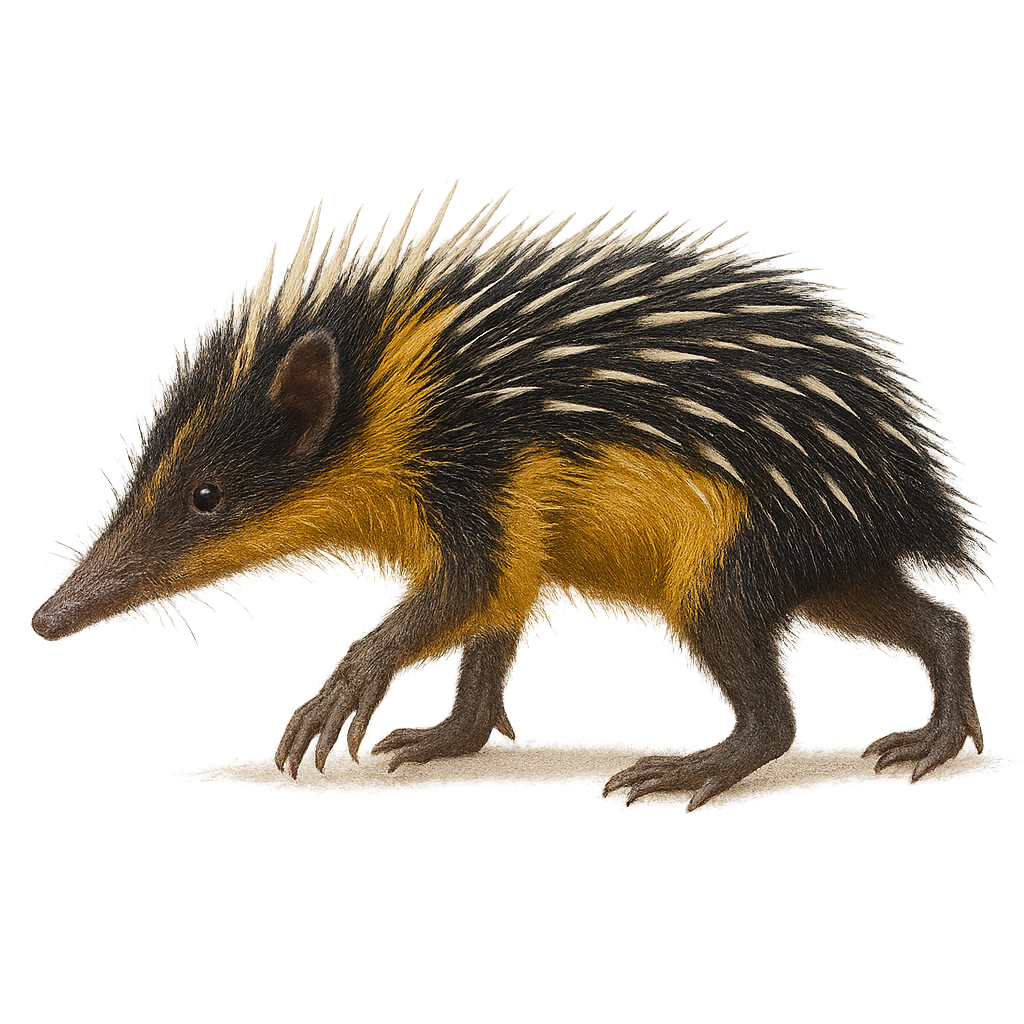Your wildlife photography guide.
Explore the lowland streaked tenrec in detail, study its behavior, prepare your shots.
Where to observe and photograph the lowland streaked tenrec in the wild
Learn where and when to spot the lowland streaked tenrec in the wild, how to identify the species based on distinctive features, and what natural environments it inhabits. The WildlifePhotographer app offers tailored photography tips that reflect the lowland streaked tenrec’s behavior, helping you capture better wildlife images. Explore the full species profile for key information including description, habitat, active periods, and approach techniques.
Lowland Streaked Tenrec
Scientific name: Hemicentetes semispinosus

IUCN Status: Least Concern
Family: TENRECIDAE
Group: Mammals
Sensitivity to human approach: Suspicious
Minimum approach distance: 5 m
Rut period: September to October
Gestation: 50-58 jours
Births: October to December
Habitat:
Tropical rainforests, scrub areas
Activity period :
Mainly active at night, generally discreet during the day.
Identification and description:
The Lowland Streaked Tenrec, Hemicentetes semispinosus, is a small insectivorous mammal endemic to Madagascar. It is characterized by its striking black and yellow striped fur and spines, giving it a unique appearance. Measuring about 14 to 17 cm in length and weighing between 125 and 280 grams, this tenrec is primarily nocturnal and uses its spines for defense against predators. It inhabits tropical rainforests and scrub areas, feeding mainly on insects and worms. Its ability to produce sounds by rubbing its spines together is a fascinating trait used for intra-species communication.
Recommended lens:
Macro – adjust based on distance, desired framing (portrait or habitat), and approach conditions.
Photography tips:
To photograph the Lowland Streaked Tenrec, it is advisable to use a macro lens to capture the details of its unique fur. Being primarily nocturnal, it is best to photograph it at dusk or dawn when the light is soft. Be patient and discreet to avoid scaring it, and use a tripod to stabilize your camera in low light conditions. Focus on tropical rainforests and scrub areas to maximize your chances of observing it.
The WildlifePhotographer App is coming soon!
Be the first to explore the best nature spots, track rutting seasons, log your observations, and observe more wildlife.
Already 1 432 wildlife lovers subscribed worldwide

